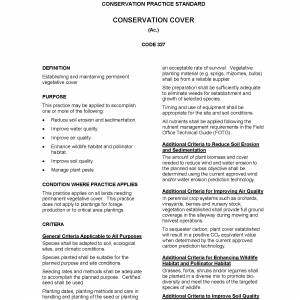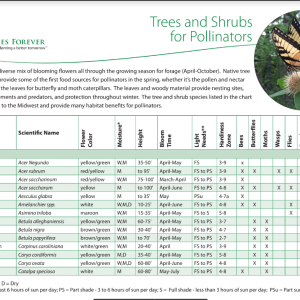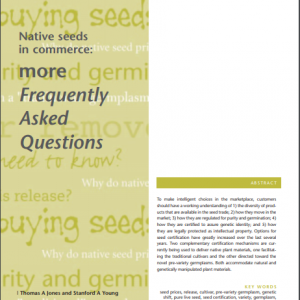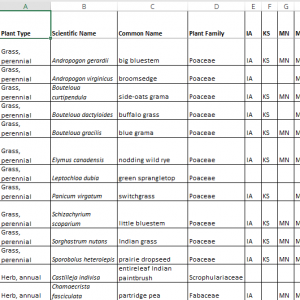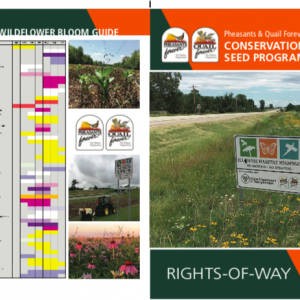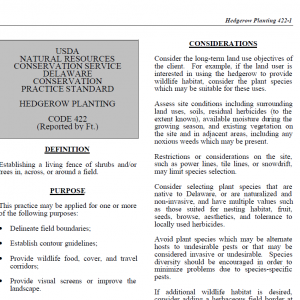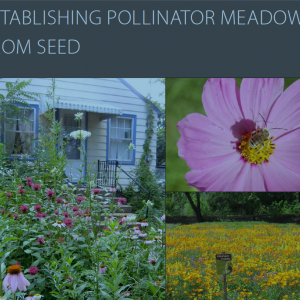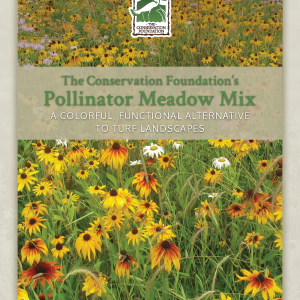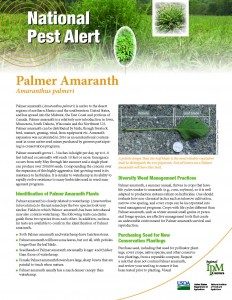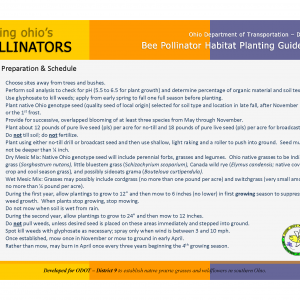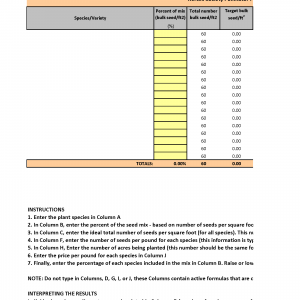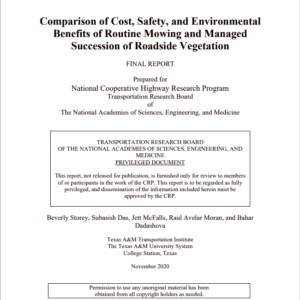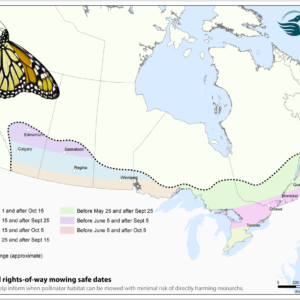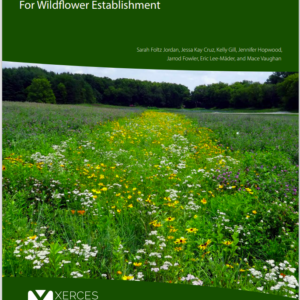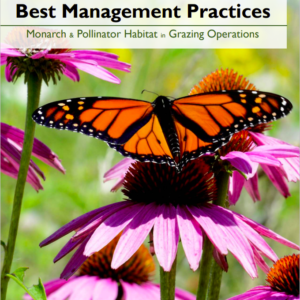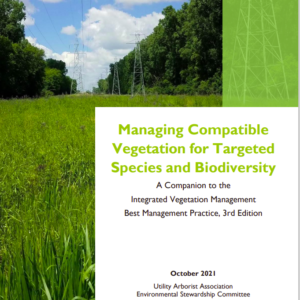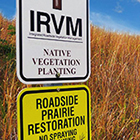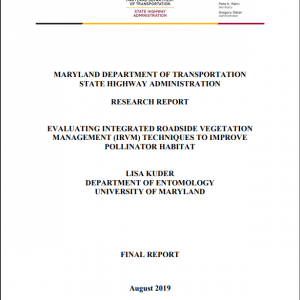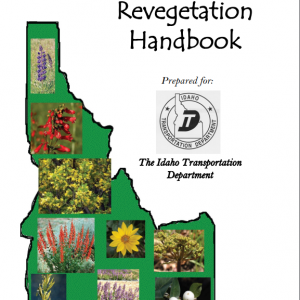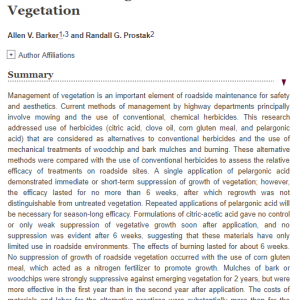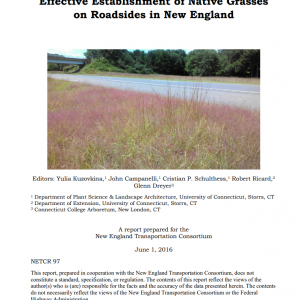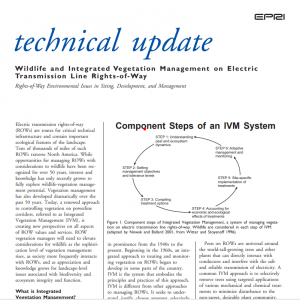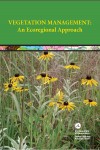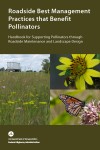General Guidelines
Nature Risk Management Maturity
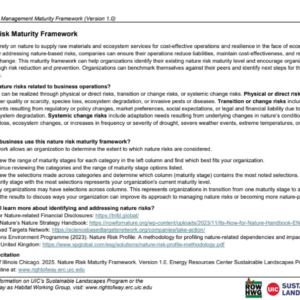
This guide by the Sustainable Landscapes Program helps companies identify nature-based risks they’re currently susceptible to and how they can lower their vulnerability.
Pollinators and Roadsides
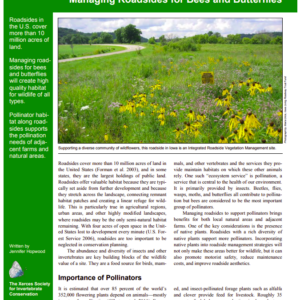
These guidelines from the Xerces Society of Invertebrate Conservation provide a concise overview of the conservation potential of roadside habitat and offer practical information on how to maximize the value of these areas for pollinators while meeting basic traffic safety requirements.
Protecting Roadside Wildflowers

This website of the Florida Wildflower Foundation provides a model resolution that can be adopted by local governments to protect roadside wildflowers. The site includes step by step advice in working towards getting the resolution adopted. While the site is designed for the state of Florida, the resolution and advice are applicable to any state.
Monarch Butterflies, Weeds, and Herbicides
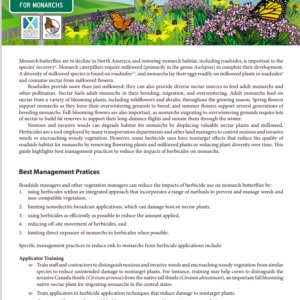
This guide by the Xerces Society for Invertebrate Conservation highlights best management practices to reduce the impacts of herbicides on monarchs.
Regional Guides for Pollinator Habitat Conservation Along Roadways
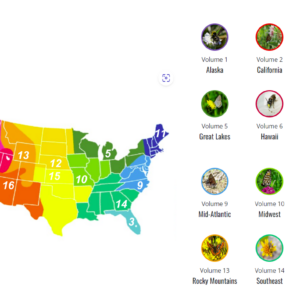
These guides created by the Xerces Society for Invertebrate Conservation instruct transportation agencies in 16 U.S. regions on how to establish or conserve pollinator habitats along roadway rights-of-way.
Roadside Weeds, Brush, and Erosion
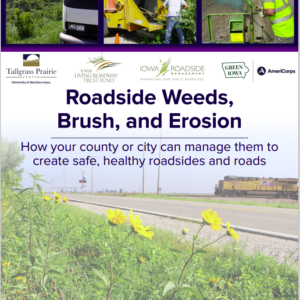
This white paper from the University of Northern Iowa’s Tallgrass Prairie Center describes how counties and cities can manage roadside weeds, brush, and erosion to create safe and healthy roadsides and roads.
Monarch Habitat Modeling: Landscape-Scale Approach to Identifying Monarch Habitat in the United States
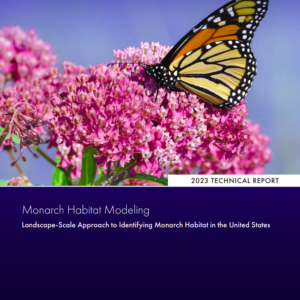
This report by EPRI summarizes the process and final methods for a landscape-scale, GIS-based approach to identifying monarch habitat in the United States.
Nature-Based Solutions for Corporate Landowners
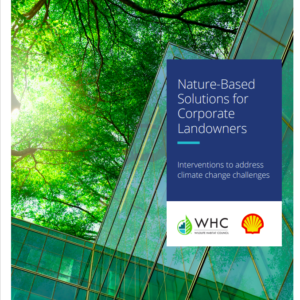
This guide by the Wildlife Habitat Council serves as a catalog for corporate landowners to learn more about specific nature-based solutions (NbS) to climate challenges, and select those that best align with their needs. The publication includes twenty NbS interventions, from reforestation to green roofs, as well as real-life case studies that illustrate how corporations have successfully implemented each solution.
API Guidance for Conservation Programs on Pipeline Right of Ways
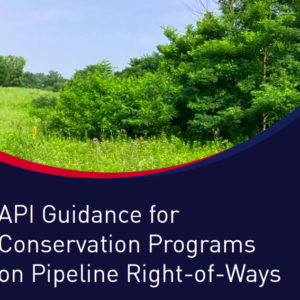
This document provides guidelines, resources, and strategies for pipeline operators and managers to use in the development and management of conservation programs for pipeline rights-of-way (ROW) and assets. The goal of this document is to help operators and managers with ROW conservation programs, including guidance on how to identify, plan, implement, and mature conservation practices to maintain the highest standards of safety while also achieving benefits for the natural environment, the community, and the organization.
Guide to Wind Energy and Wildlife
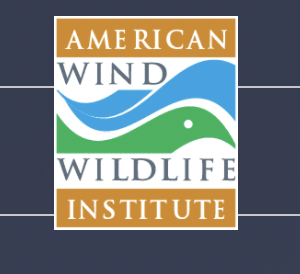
This interactive guide from the American Wind & Wildlife Association summarizes current information on onshore wind energy development in the U.S. in the context of protecting wildlife and their habitats, including regulatory considerations, impacts and risk factors to wildlife and habitat, and landscape assessment and siting.
Pollinator Habitat Establishment & Management Guide

This habitat guide, developed by the Bee & Butterfly Habitat Fund, outlines the steps that go into planning, preparing, planting, and maintaining great pollinator habitat.
Best Management Practices for the Monarch Butterfly in Oklahoma Rights-of-Way
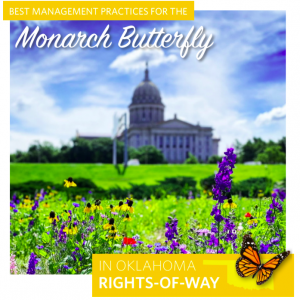
This document, authored by the Rights-of-Way Work Group of the Oklahoma Monarch and Pollinator Collaborative, provides recommended Best Management Practices for monarch habitat on Oklahoma Industry Sector Rights-of-Way (ROW), including transportation ROWs, electric transmission ROWs, solar parks, oil and gas distribution lines, and rail corridors.
EPRI: Overview of Pollinator-Friendly Solar Energy
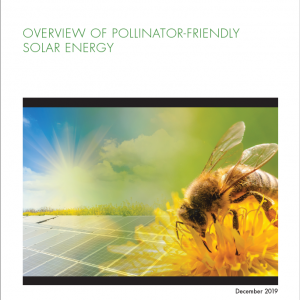
This Technical Brief provides a summary of the key considerations related to “pollinator-friendly solar,” including: site design, construction and maintenance; procurement of pollinator-friendly solar; and the business case. Sidebars cover honey bees on solar fields, brown fields to bright fields, and several specific power company case studies.
North Carolina Guidelines for Planting Within Highway Right-of-Way
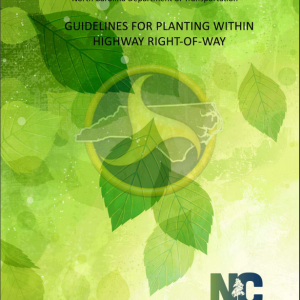
This guide developed by North Caroline Dept. of Transportation outlines legal requirements and permits for planting on highway right-of-way.
EPRI: Conservation Actions for Electric Power Companies to Support Monarch Butterflies

This report prepared by the Electric Power Research Institute and the Xerces Society for Invertebrate Conservation describes the conservation actions for monarch habitat protection, management, enhancement, and restoration that are compatible with the land use and management of electric power company properties. Conservation actions are mapped to the various land asset types to understand where the greatest monarch conservation potential exists.
North Carolina Technical Guidance for Native Plantings on Solar Sites
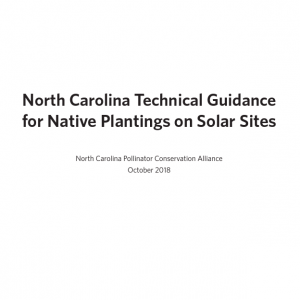
This technical guide developed by North Carolina Pollinator Conservation Alliance highlights healthy pollinator communities , solar farm site preparation and planting guidelines and the benefits of pollinator conservation activities.
Maintaining Roadsides for Pollinators Establishment, Restoration, Management and Maintenance
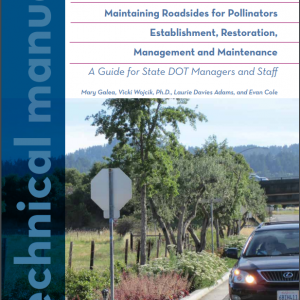
This technical manual developed by Pollinator Partnership is a guide for state Department of Transportation managers and staff. It provides information on roadside enhancements that allows to maintain safe and accessible roadsides and support pollinators.
Milkweeds: A Conservation Practitioner’s Guide
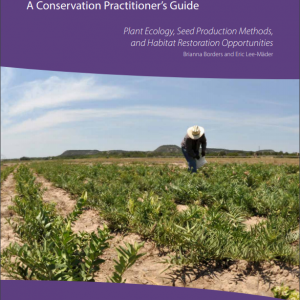
This guide developed by Xerces Society for Invertebrate Conservation shows how to bring back milkweeds and restore habitat for monarch butterflies. It is a manual on large-scale milkweed seed production, nursery propagation, and field restoration of the plants.
Roadsides – A Guide to Creating a Pollinator Patch
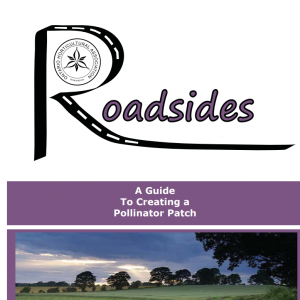
This guideline published by Ontario Horticultural Association aims to create pollinator-habitat patches in Ontario – along roads, in unused public spaces and in home gardens. The goals of the project are three-fold: to provide habitat for our native pollinators; to reintroduce native Ontario plants; and to beautify the province
Factors and benefits in the establishment of modest-sized wildflower plantings: a review

This review article published by Native Plants Journal highlights some of the previous research in establishing modest-sized wildflower plantings. Components include: pre-planting concerns; planting and maintenance; wildflower dividends; and wildflower establishment recommendations.
Managing for Monarchs in the West: Best Management Practices for Conserving the Monarch Butterfly and its Habitat

This guideline developed by the Xerces Society for Invertebrate Conservation provides recommendations for managing existing monarch breeding and migratory habitat and where/when to restore new habitat in the western U.S. Included are BMPsfor mowing roadsides and other rights-of-way as well as prescribed fire, pesticides, invasive and noxious plant management, and other restoration practices.
Establishing Prairie Grasses and Wildflowers
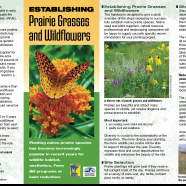
This guideline developed by the Minnesota Department of Natural Resources provides an overview of the steps necessary to successfully establish native prairie species.
Establishing Pollinator Meadows from Seed
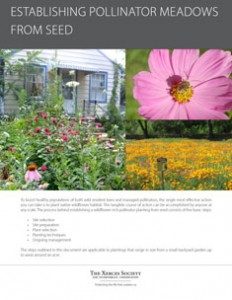
The Xerces Society for Invertebrate Conservation developed this guideline to help landowners with site selection, site preparation, plant selection, planting techniques, and ongoing management of sites up to an acre in size.
Pollinators and Roadsides: Best Management Practices for Managers and Decision Makers
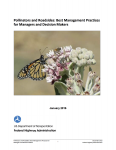
The Federal Highway Administration issued these guidelines for vegetation management and enhancing native vegetation along roadsides to improve pollinator habitat. This document includes case studies, tools, and recommendations.
Pollinator Best Management Practices for Roadsides and Other Rights-of-Way
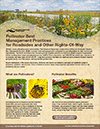
This brochure developed by the Minnesota Department of Agriculture provides Best Management Practices to reduce negative impacts on pollinator habitat from current management practices, improve existing habitat, and create new habitat near, adjacent to, or in roadsides and other rights-of-way.
Pollinator-Friendly Best Management Practices for Federal Lands
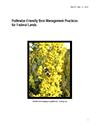
This draft document prepared by the U.S. Department of Agriculture and the Department of the Interior provides general information about practices and procedures to use when considering pollinator needs, particularly for project development and management on Federal lands.
Literature Review: Pollinator Habitat Enhancement and Best Management Practices in Highway Rights-of-Way

This literature review was prepared by ICF International and the Xerces Society for Invertebrate Conservation on behalf of the U.S. Department of Transportation, Federal Highway Administration. It represents a first step in an effort to provide practicable BMPs that FHWA can offer transportation agencies to develop pollinator programs in their jurisdictions and enhance these programs where they already exist.
Roadsides for Bees and Butterflies

The University of Northern Iowa Tallgrass Prairie Center developed this pamphlet on bee and butterfly habitat along roadsides. The pamphlet addresses concerns with vehicle collisions, describes how Integrated Vegetation Management using native wildflowers and grasses can help pollinators, and provides additional resources for more information.
Chicago Wilderness: Native Landscape & Ecological Restoration Guide

Prepared by Chicago Wilderness’s Native Landscape & Restoration Contractor Selection Guide Working Group with the primary purpose of providing assistance to organizations in the selection and oversight of appropriate contractors and consultants for native landscaping and ecological restoration work.
Monarch Conservation in America’s Cities
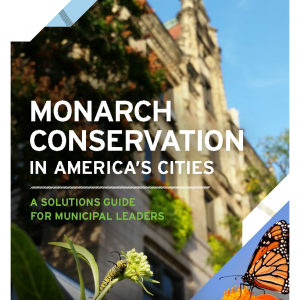
This manual written by the National Wildlife Federation offers case studies and shares innovative best practices that can be used by municipalities across the nation to conserve monarch butterflies.
